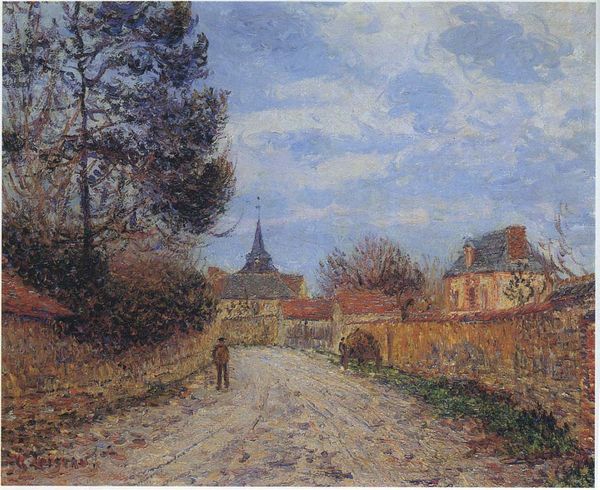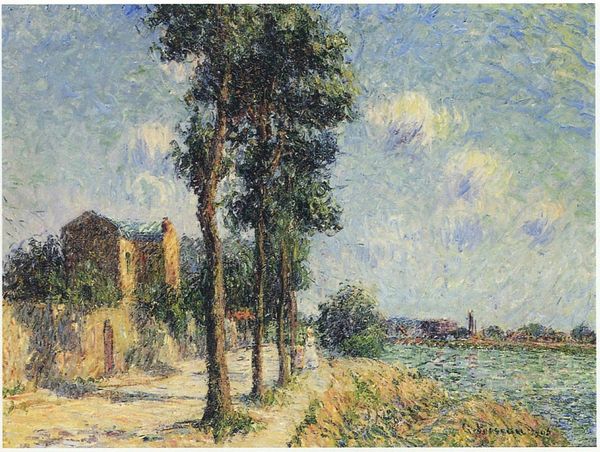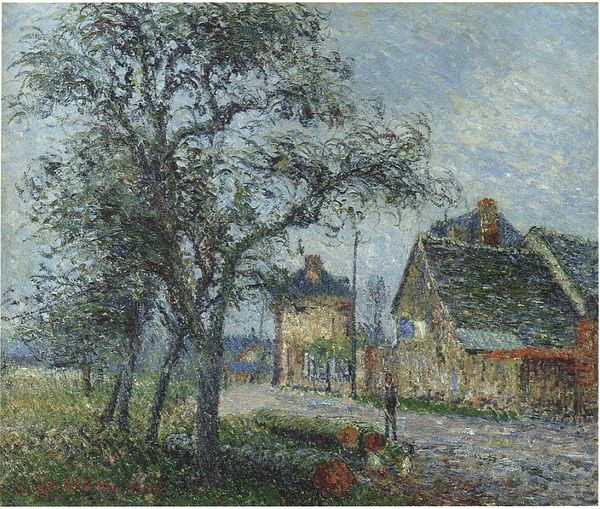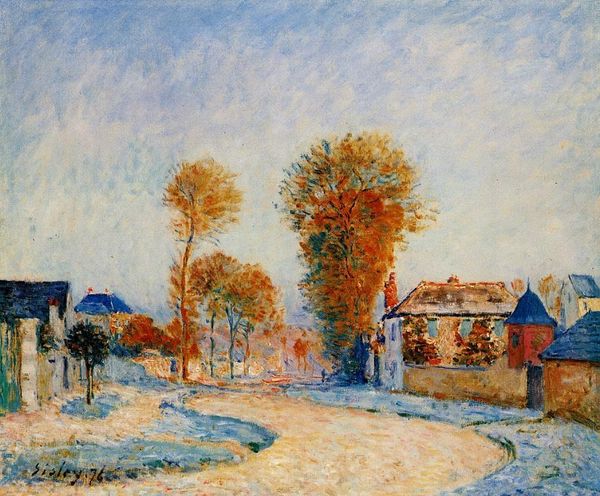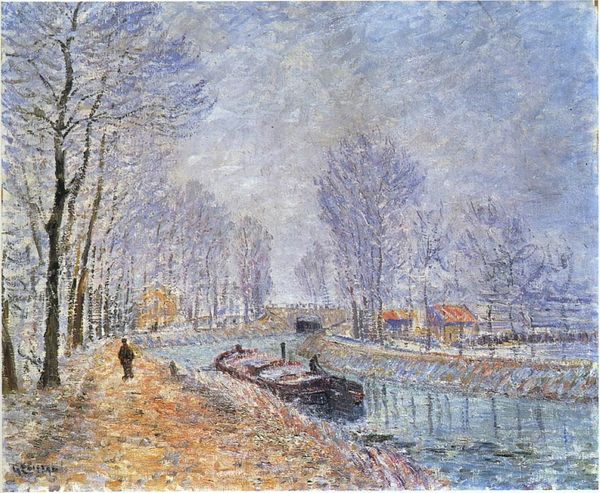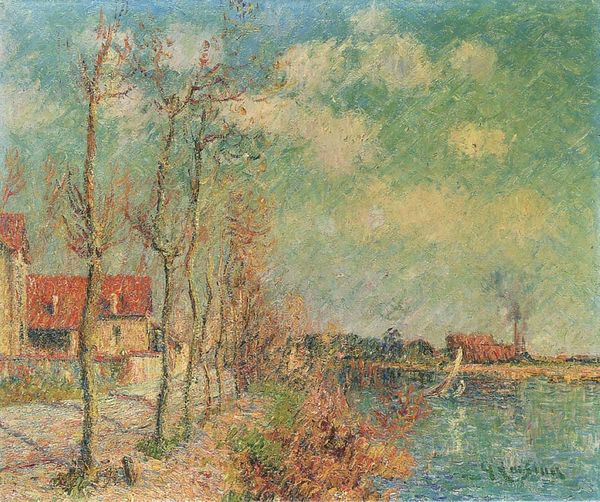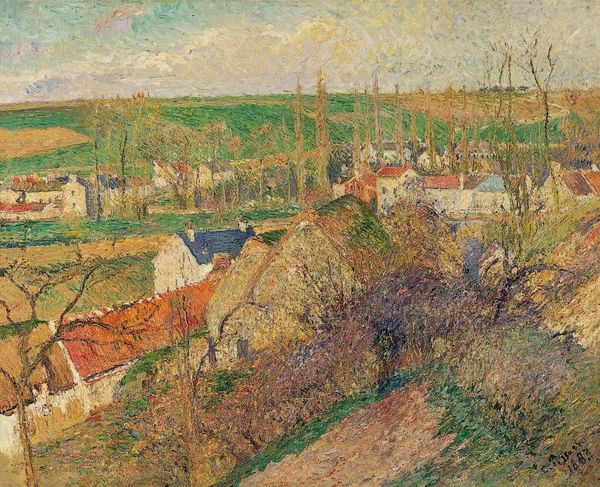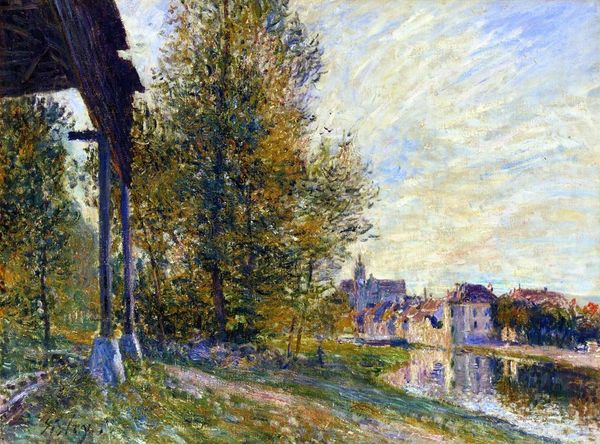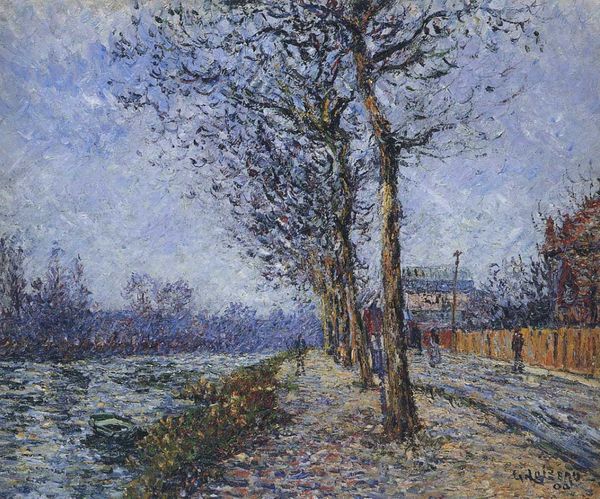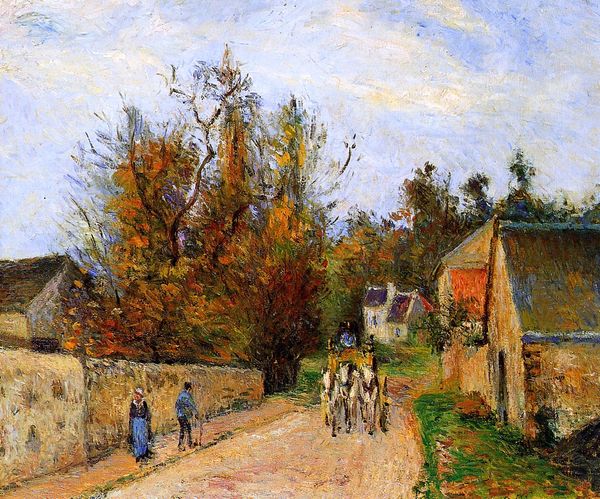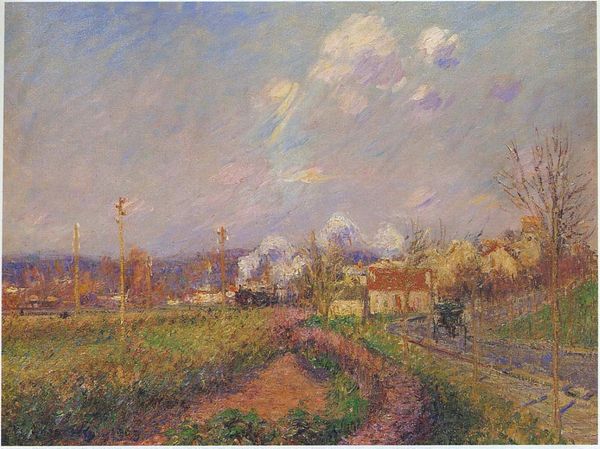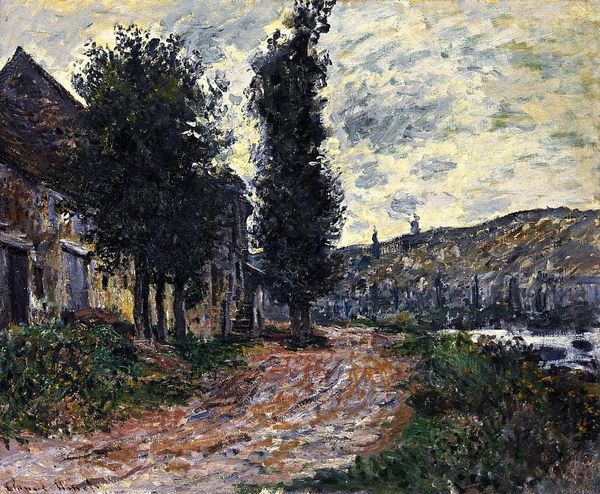
Copyright: Public domain
Curator: Before us hangs Gustave Loiseau’s "Quay of Pothius in Pontoise," painted in 1906, a landscape rendered en plein air with oil paints. Editor: My immediate impression is of a muted tranquility. The composition leads the eye gently along the riverbank, yet there’s also a certain coldness conveyed through the almost barren trees and the subdued color palette. Curator: Loiseau, deeply entrenched in the Impressionist tradition, depicts Pontoise, a commune northwest of Paris. The painting captures a moment in time along the Oise river, where working-class people lived near factories, often suffering poor living conditions and pollution that impacted marginalized communities. It offers a glimpse into their lives and environmental challenges. Editor: Observe the texture – the brushstrokes themselves construct the forms. The houses, the river, the sky; everything is built from small dabs and strokes of paint. This technique gives a vibrating quality to the light, creating a sense of movement within the still scene. Curator: Indeed. The visible brushstrokes become crucial in depicting light and shadow, especially around the buildings. But, also consider the perspective offered— it positions the viewer within the everyday experiences of the town’s inhabitants. What socioeconomic story can we piece together from such ordinary elements? Editor: I am drawn to how the formal elements create visual relationships. The verticality of the trees, the horizontal river line. Loiseau organizes reality into these fundamental shapes. Curator: It's crucial to also think about what he *excludes*. There’s a sanitization, perhaps? He does not obviously depict all social ills that we know to be there. But by painting here, does he inadvertently call attention to these very realities? It calls on the viewers to think about the historical framework they’re operating within. Editor: Interesting. The composition is certainly strategic. The muted tones allow the buildings’ forms to be highlighted, without really offering any obvious statement on the socioeconomics of it all. It almost feels like Loiseau wants you to look at his Impressionistic handling of color rather than some pointed political observation. Curator: I believe he is subtly compelling the viewers to reflect on the community, and their way of life, even if not immediately evident. Editor: Ultimately, Loiseau presents a compelling study in light and form; his formal approach makes the painting such a pleasing visual experience. Curator: And yet, there's still much to unravel about the intersection of labor, place, and artistic vision presented here. A simple glance opens to a bigger discussion.
Comments
No comments
Be the first to comment and join the conversation on the ultimate creative platform.

